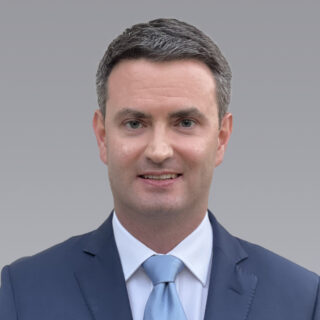The behavioral health market continues to grow and gain steam as a desirable investment sector. The broader behavioral health market consists of multiple subsegments including psychiatric hospitals, substance abuse treatment centers, mental health disorder treatment centers, intermediate care facilities for the developmentally disabled, crisis stabilization units, and even post-acute care environments like halfway houses and sober living facilities. The Patient Protection and Affordable Care Act (PPACA) was enacted in 2010, and really started to accelerate the growth within this sector, and the accompanying real estate asset class that is mission critical to the operation. PPACA required health insurance policies to include coverage for psychiatric and behavioral health treatment and parity with coverage for medical treatment. Concurrent with PPACA, there was also a growing destigmatization movement for behavioral health, and a push for helping and supporting those with mental health disorders. Fast forward to the COVID-19 pandemic, and what was already a growing health issue was exacerbated by stay-at-home orders, job loss, and lack of human interaction. To put in perspective, SAMHSA noted in a 2021 survey that nearly 1 in 4 adults 18 and older, and 1 in 3 among adults aged 18 to 25, had a mental illness in the past year.
 Justin Butler
Justin Butler
“Fast forward to the COVID-19 pandemic, and what was already a growing health issue was exacerbated by stay-at-home orders, job loss, and lack of human interaction. To put in perspective, SAMHSA noted in a 2021 survey that nearly 1 in 4 adults 18 and older, and 1 in 3 among adults aged 18 to 25, had a mental illness in the past year.”
Unfortunately, the fastest growing sector in this asset class has primarily been the substance use disorder (SUD) treatment facilities. These facilities sometimes provide a specific service in the continuum of care or can also provide the entire continuum of care. Generally speaking, the levels of care are outlined below:
- Intensive Outpatient Treatment (IOP)- Substance abuse intensive outpatient programs (IOPs) are direct services for people with substance use disorders or co-occurring mental and substance use disorders who do not require medical detoxification or 24-hour supervision. IOPs are alternatives to inpatient and residential treatment. They are designed to establish psychosocial supports and facilitate relapse management and coping strategies.
- Partial hospitalization (PHP) provides a structured program of outpatient psychiatric services as an alternative to inpatient psychiatric care. It’s more intense than care you get in a doctor’s or therapist’s office. You get this treatment during the day, and you don’t have to stay overnight.
- Detox – Detoxification is a set of interventions aimed at managing acute intoxication and withdrawal. It denotes a clearing of toxins from the body of the patient who is acutely intoxicated and/or dependent on substances of abuse. Detoxification seeks to minimize the physical harm caused by the abuse of substances.
- Residential Treatment are community-based residences for individuals exhibiting symptoms of substance abuse who need a structured living environment. These facilities cater to adolescents and adults and are sometimes segregated by gender as well. These facilities were designed to provide long-term residential care with an overlay or coordination of mental health services including group therapy, individual therapy, wellness, and related recovery services.
The accompanying real estate for these levels of care has been evolving with the growth of the industry. Most facilities that treat substance abuse disorder are not purpose-built. Many are adaptive reuses of nursing homes, assisted living facilities, hospitals, schools, large homes, and sometimes even apartments and office buildings. There have been more facilities that are operating in purpose-built facilities, but the costs for these facilities compared to an adaptive reuse are considerable, and the increased cost often doesn’t provide comparable increased utility.
Many operators have opted to lease their facilities and focus on their core business of providing recovery and mental health services. There have been multiple sale/leaseback transactions that generally see year one yields in the 8.00% to 10.00% range but can vary above and below that based on rent levels, tenant strength, quality of the real estate and location. Rent levels are generally high in these facilities relative to what one would generally think for the real estate. These higher rent levels are often driven by a risk factor, as well as the challenges to get the facilities zoned to be able to provide these services. Seeing rents in the $30 to $40 PSF NNN range is not uncommon, and many operators can afford rent at these levels.
Like many healthcare related assets, the key to underwriting the real estate really lies in the tenant operator. Investors will look for healthy EBITDAR Coverage (EBITDAR / Rent) levels of 2.0x rent or more, but the most astute investors really dive into the business operation, specifically the payors on the revenue side of the operation. The market was originally structured as a private pay and out-of-network business model, where providers could name their price, to a degree. Insurance companies have since brought many providers in network, at much lower rates, but also provide a steady stream of patients. Medicaid is also a large payor in this space, with many operators purely focused on this payor, which typically provide some of the lowest reimbursements, but in return they normally provide a very steady and high-volume stream of patients. The in-network and Medicaid providers have proven to have a more viable and stable income stream, and are thus more desirable from a tenant perspective, as well as an operational investment perspective.
From an operational standpoint, M&A has slowed in the wake of increased interest rates and capital constraints in 2023. However, there are still many private equity and venture capital buyers, as well as other operators and even publicly traded companies that are pursuing acquisitions. We’ve seen operational acquisitions in the 6 to 10x EBITDA levels, or approximately 10% to 17% capitalization rate range. The range is primarily driven by the payors and in network contracts, as well as historical stability of the cash flows.
In the medium- to long-term future, we expect this industry to continue to evolve. We would expect to see more purpose-built facilities, as well as larger operators with national networks and in-network insurance relationships. Expectations are for continued State and Federal funding of mental health programs, which for the most part has achieved bipartisan support. From a real estate investment perspective, we have already seen some publicly traded healthcare and net lease REITs purchase assets in this space, and we would expect that to continue, with more investors entering the space. As the market continues to evolve and grow, we will see more and more acceptance of this real estate asset class, and investment in it.



 Shawn Janus
Shawn Janus

 Sloane Nichols
Sloane Nichols